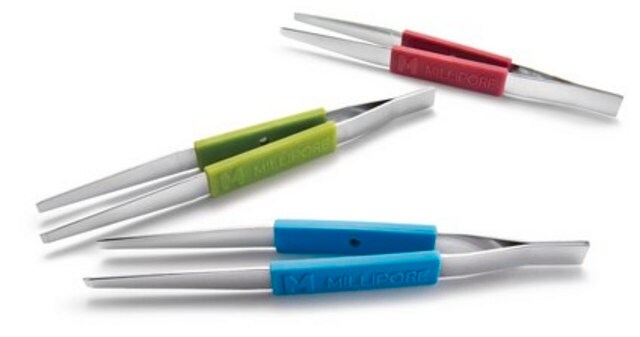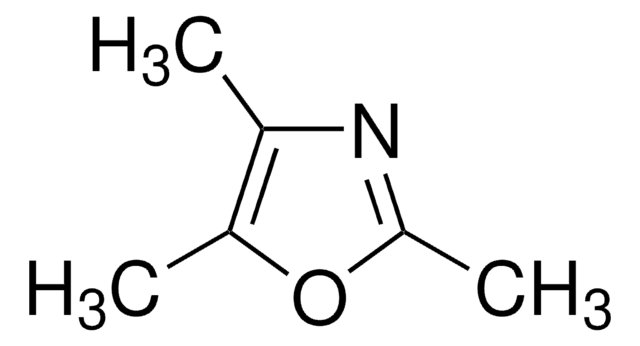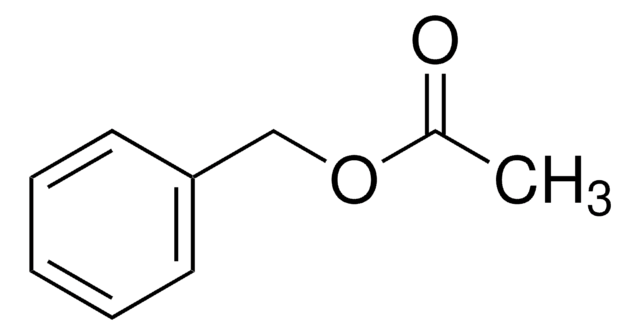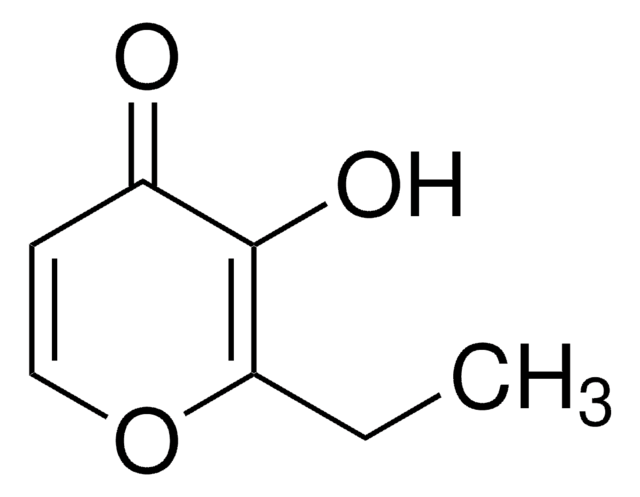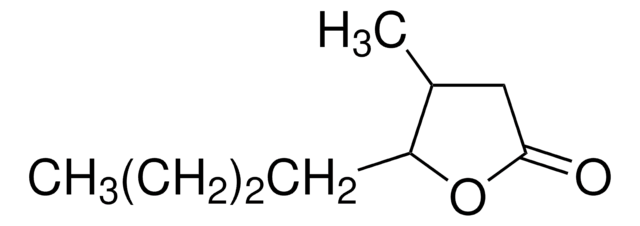W242705
Ethyl butyrate
≥98%, FCC, FG
Synonym(s):
Butyric acid ethyl ester
About This Item
Halal
Kosher
Recommended Products
biological source
synthetic
Quality Level
grade
FG
Halal
Kosher
Agency
meets purity specifications of JECFA
reg. compliance
EU Regulation 1334/2008 & 178/2002
FCC
FDA 21 CFR 117
FDA 21 CFR 182.60
vapor density
4 (vs air)
vapor pressure
15.5 mmHg ( 25 °C)
Assay
≥98%
autoignition temp.
865 °F
refractive index
n20/D 1.392 (lit.)
bp
120 °C (lit.)
mp
−93 °C (lit.)
density
0.875 g/mL at 25 °C (lit.)
application(s)
flavors and fragrances
Documentation
see Safety & Documentation for available documents
food allergen
no known allergens
Organoleptic
ethereal; fruity; pineapple; sweet
SMILES string
CCCC(=O)OCC
InChI
1S/C6H12O2/c1-3-5-6(7)8-4-2/h3-5H2,1-2H3
InChI key
OBNCKNCVKJNDBV-UHFFFAOYSA-N
Looking for similar products? Visit Product Comparison Guide
Related Categories
Application
- Timolol transport from microemulsions trapped in HEMA gels.: This article examines the microemulsion systems for drug delivery, where ethyl butyrate could play a role in solubilizing components (Li CC et al., 2007).
Signal Word
Warning
Hazard Statements
Precautionary Statements
Hazard Classifications
Flam. Liq. 3
Storage Class Code
3 - Flammable liquids
WGK
WGK 1
Flash Point(F)
78.8 °F - closed cup
Flash Point(C)
26 °C - closed cup
Personal Protective Equipment
Choose from one of the most recent versions:
Already Own This Product?
Find documentation for the products that you have recently purchased in the Document Library.
Customers Also Viewed
Protocols
Separation of Acetone; Acetic acid; Propionic acid; Ethyl butyrate; Ethanol; Isoamyl acetate; Isobutyric acid; 3-Methyl-2-butanol; Methyl acetate; 1-Propanol; Acetal, ≥98%, FG; 2-Methyl-1-pentanol; Butyl acetate; Ethyl propionate; 3-Pentanol; 2-Pentanol, 98%; Ethyl isobutyrate; Isobutyl acetate; Acetaldehyde; Furfural; Butyric acid; Methanol; Ethyl acetate
Global Trade Item Number
| SKU | GTIN |
|---|---|
| W242705-1DRUM-K | |
| W242705-20KG-K | 4061837544545 |
| W242705-4KG | |
| W242705-9KG-K | |
| W242705-SAMPLE | |
| W242705-SAMPLE-K | 4061837544569 |
| W242705-1KG | |
| W242705-1KG-K | 4061837544538 |
| W242705-20KG | |
| W242705-800G | |
| W242705-4KG-K | 4061837544552 |
| W242705-8KG | |
| W242705-9KG |
Our team of scientists has experience in all areas of research including Life Science, Material Science, Chemical Synthesis, Chromatography, Analytical and many others.
Contact Technical Service
